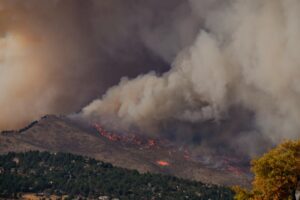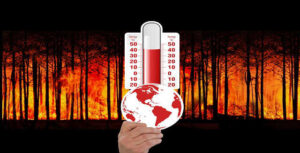Introduction
America stands at a critical climate crossroads as 2025 unfolds, with the nation experiencing a tidal wave of significant events related to pollution, climate change, and natural disasters. Recent weeks have brought sweeping changes at the federal level, unrelenting extreme weather, and a rise in local resilience efforts. For concerned citizens, policymakers, and business leaders, understanding these developments—and their far-reaching implications—has never been more crucial.
Breaking Federal News: EPA Climate Rollback Sends Shockwaves
Trump Administration Seeks to Overturn EPA’s “Endangerment Finding”
On July 30–31, 2025, headlines across major outlets like CNN, The New York Times, Reuters, and NPR reported that the Trump administration intends to revoke the Environmental Protection Agency’s foundational “endangerment finding.” This regulation serves as the scientific and legal backbone for U.S. efforts to control greenhouse gas emissions—a move long targeted by industry lobbyists but widely opposed by health advocates and scientists.
Why this matters: Rolling back the endangerment finding could severely weaken the federal government’s ability to regulate emissions, creating chaos for states and businesses that have invested billions in clean-energy technology. Scientists warn that unraveling this foundational regulation endangers both public health and long-term economic stability, contradicting decades of scientific research on the damaging effects of air pollution and unchecked carbon emissions.
Key responses:
- Legal challenges are expected from multiple states and environmental organizations.
- Business leaders voice concern, noting that regulatory consistency is essential for long-term planning.
- Scientists across the country stress the health impacts of higher emissions and the global need to curb climate change.
Catastrophic Floods Put Congressional Spotlight on Disaster Readiness
Texas Lawmakers Investigate Deadly Hill Country Flash Floods
In Texas, the aftermath of devastating flash floods continues to grip national attention. With at least 137 lives lost during the July 4 holiday floods in the Texas Hill Country, state lawmakers have convened urgent hearings (as of July 31, 2025) to dissect failures in the early warning system and gaps in disaster preparedness.
Community and scientific perspective: Across testimonies, emergency management officials, scientists, and survivors link the tragedy to weakened public funding for weather monitoring and preparedness. With climate change fueling more severe rainfall events, experts urge updated infrastructure and better coordination among county agencies and state resources.
Potential solutions on the table:
- Upgrading flood alert systems and warning technology.
- Enhanced funding for local meteorological agencies.
- Legislative pledges to improve disaster relief and community resilience.
Grassroots Climate Action Blooms Amid Federal Uncertainty
Communities Step Up with Local Climate Solutions
While the federal government scales back climate regulation, communities nationwide are refusing to wait. Energy from the local level surges, with more than 2,400 grassroots projects documented through The New York Times’ “50 States, 50 Fixes” initiative as of July 31, 2025. These range from pollinator gardens and tree-planting campaigns to ambitious solar and flood mitigation projects—all designed to foster climate resilience.
Scientific validation: Experts observe that localized efforts, especially those prioritizing native plants and renewable energy, yield tangible benefits for public health, biodiversity, and climate resilience. In the face of regulatory rollbacks, many see hope in the growing number of engaged citizens and local governments.
Table: At a Glance – Recent U.S. Climate and Disaster News
| Event | Date | Location | Government / Scientific Response |
|---|---|---|---|
| EPA Climate Rollback | Jul 30–31, 2025 | Washington, D.C. | Legal battles, warnings from experts, business pushback |
| Texas Floods Congressional Inquiry | Jul 31, 2025 | Texas Hill Country | Hearings, calls for better alerts and preparedness |
| Grassroots Climate Initiatives | Ongoing | Across the U.S. | Surge in local projects, scientific support for resilience |
Expert Voices Rise Above the Noise
Industry insiders and scientific experts have been quick to weigh in. “Industries that have been adhering to GHG standards set by the EPA have been doing so for a long time and do not wish to see those standards removed… The consistency of the regulatory framework is crucial for industries as a foundational element,” observed Meghan Greenfield, a former EPA counsel.
Leading climate scientists highlight the contradictions in proposed changes, stating, “If a pollutant causes climate change, it would no longer count as hurting us. This runs counter to both basic logic and a growing mountain of science.”
Why This Matters for Every American
- Public Health: More air pollution translates to more asthma, heart disease, and premature deaths, especially in disadvantaged communities.
- Economic Impact: Billions invested in clean technologies hang in the balance, and climate-driven disasters threaten homes, businesses, and jobs nationwide.
- Resilience: Local action is not only possible but essential, from designing climate-friendly landscapes to updating local emergency systems.
- Preparedness: The Texas floods are a stark warning—comprehensive, coordinated disaster planning saves lives.
What’s Next?
America’s climate crossroads demands courageous leadership and community engagement. The coming weeks will see legal challenges, new local projects, and—unquestionably—more debate over the country’s path forward.
Yet, amid political swirl and heartbreaking disasters, there is also hope: the rise of grassroots activism and the chorus of scientific voices insisting that action is not only possible but urgent.







